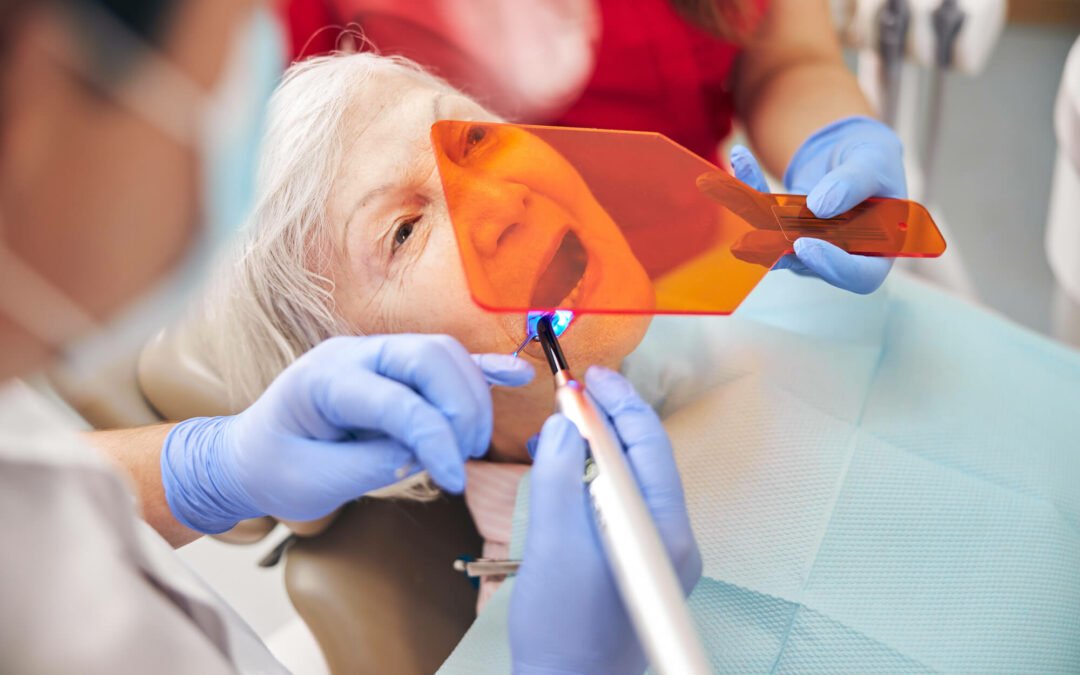Composite Bonding
Composite bonding is a popular dental procedure designed to improve the appearance of teeth and enhance one’s smile. It involves using a tooth-colored resin material that is applied and hardened with a special light, bonding the material to the tooth to restore or improve a person’s smile. But what makes composite bonding such a sought-after option in cosmetic dentistry? Let’s dive in and explore this transformative procedure in detail.
What is Composite Bonding?
Composite bonding is a technique where a composite resin is applied to the surface of a tooth, sculpted into shape, and then hardened and polished to match the surrounding teeth. This minimally invasive procedure can effectively address various dental imperfections, from minor chips and cracks to significant discolorations.
The Composite bonding procedure
Initial Consultation
The journey begins with an initial consultation with a dentist to discuss your dental goals and determine if composite bonding is the right solution. During this visit, the dentist will examine your teeth and possibly take X-rays to assess the extent of any damage or decay.
Preparation of the Tooth
Once a treatment plan is in place, the dentist prepares the tooth by lightly etching its surface to roughen it, making it easier for the bonding material to adhere. Sometimes, a small amount of enamel may need to be removed to ensure a smooth finish.
Application of the Composite Resin
Next, the dentist applies the composite resin in layers, meticulously shaping it to achieve the desired form. Each layer is hardened using a special curing light, which bonds the material to the tooth.
Shaping and Polishing
After applying and curing the resin, the dentist will shape the composite material to blend seamlessly with the natural contours of your teeth. The final step is polishing the bonded tooth to give it a smooth, shiny finish that matches the surrounding teeth.
Benefits of Composite Bonding
Aesthetics
Composite bonding can significantly enhance the appearance of teeth, providing a natural and attractive look. The resin is available in various shades to match your natural tooth color, ensuring a seamless blend.
Durability
While not as strong as natural teeth, composite bonding materials are quite durable and can withstand everyday use. With proper care, bonded teeth can last for many years.
Cost-Effectiveness
Composite bonding is relatively affordable compared to other cosmetic dental procedures like veneers or crowns. It offers a cost-effective solution for improving your smile without breaking the bank
Common Uses of Composite Bonding
Repairing Chipped or Cracked Teeth
One of the most common uses of composite bonding is to repair minor chips or cracks. The bonding material can restore the tooth’s shape and functionality, preventing further damage.
Closing Gaps Between Teeth
Composite bonding is an excellent option for closing small gaps between teeth, providing a more uniform and appealing smile.
Improving Tooth Color
Discolored teeth that do not respond well to whitening treatments can benefit from composite bonding. The resin can be color-matched to the surrounding teeth, masking discolorations effectively.
Changing the Shape of Teeth
If you have teeth that are irregularly shaped or disproportionately small, composite bonding can be used to reshape them for a more balanced and harmonious appearance.
Composite Bonding vs. Other Dental Procedures
When considering composite bonding, it’s helpful to compare it with other cosmetic dental procedures:
Composite Bonding vs. Veneers: Veneers are thin shells that cover the front surface of the teeth. While veneers are more durable and stain-resistant, they require more enamel removal and are more expensive than composite bonding.
Composite Bonding vs. Crowns: Crowns encase the entire tooth and are used for more severe damage. They are stronger but also more invasive and costly compared to bonding.
Composite Bonding vs. Teeth Whitening: Teeth whitening only addresses discoloration, while composite bonding can fix various imperfections. However, bonding cannot lighten the natural color of teeth as whitening does.
Cost of Composite Bonding in the UK
The cost of composite bonding in the UK can vary based on factors such as the complexity of the case, the number of teeth treated, and the dentist’s experience. On average, you can expect to pay between £80 to £300 per tooth. Composite bonding is the most affordable option compared to other cosmetic dental treatments.
Final Thoughts
Composite bonding is a versatile, cost-effective, and minimally invasive option for those looking to enhance their smile. At Warwick Lodge Dental, we’re committed to helping you achieve a brighter, more confident smile. If you’re considering composite bonding or have any questions, feel free to contact us for a consultation. Our experienced team is here to guide you through every step of the process.

